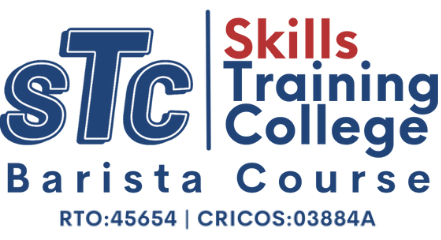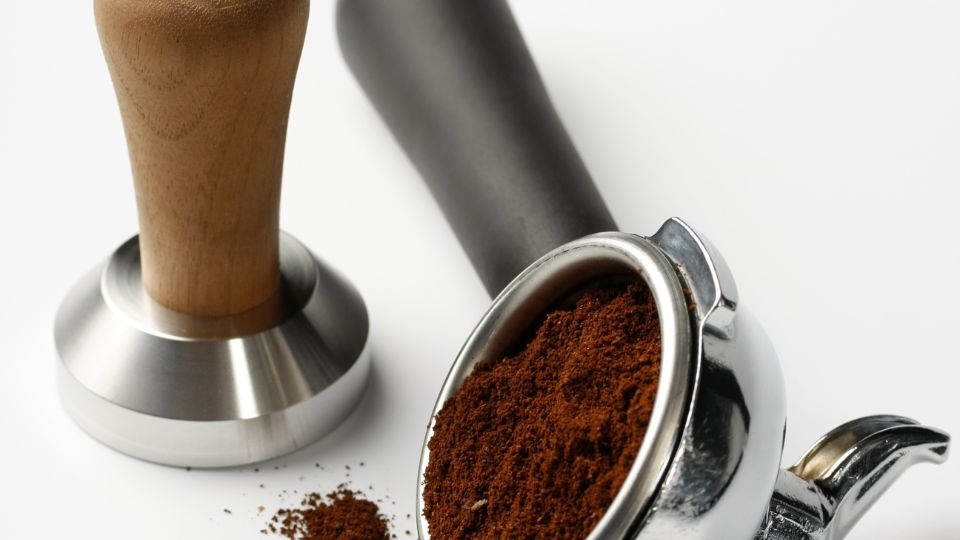Coffee Grounds if not handled properly, can be sticky little fellas. The last thing you want for your coffee machine is a sticky surface that interferes with your future coffee preparations.
The pile of used grounds you obtain after drawing your espresso shot is known as an espresso puck. Your puck should ideally be small, hot, moist, and simple to remove from the portafilter using a knock box.
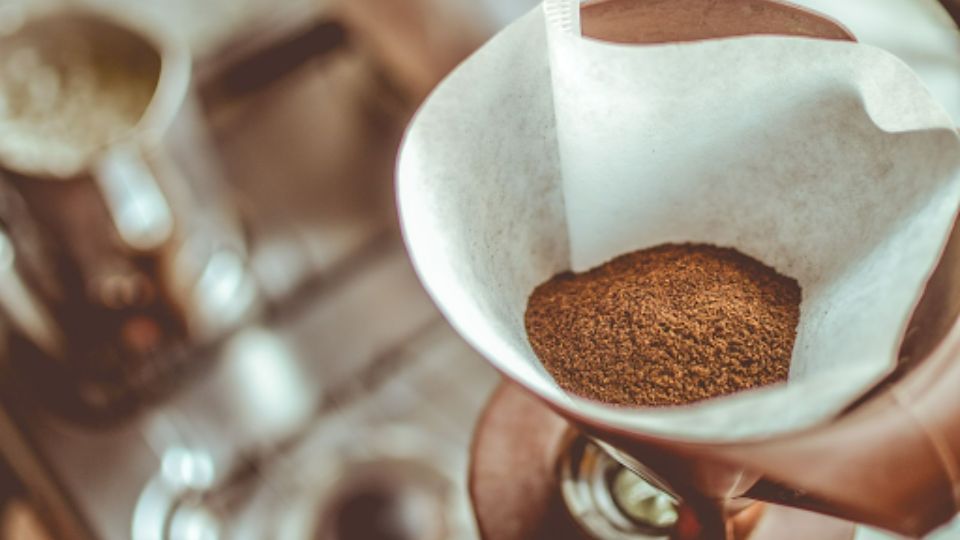
On the other hand, your puck might suction and adhere to the group head screen instead of coming off in the portafilter if it is too moist or if it is too dry.
This is not only slightly annoying, but if it is not properly removed, can also be difficult to clean up. We understand your struggle but don’t worry; we’ve got you covered.
Let us tell you exactly why it occurs, how to prevent getting it repeatedly, and the most effective methods for cleaning your coffee tools if you have an espresso machine or any other tool containing a portafilter. Sometimes coffee also gets stuck in the funnel during the process of agitation because it gets a good stir before it gets to extraction.
It doesn’t stop at getting an espresso machine, does it? Get your Nationally Accredited Barista Training Certification to take over the coffee world like never before!
Are Coffee Grounds Sticky?
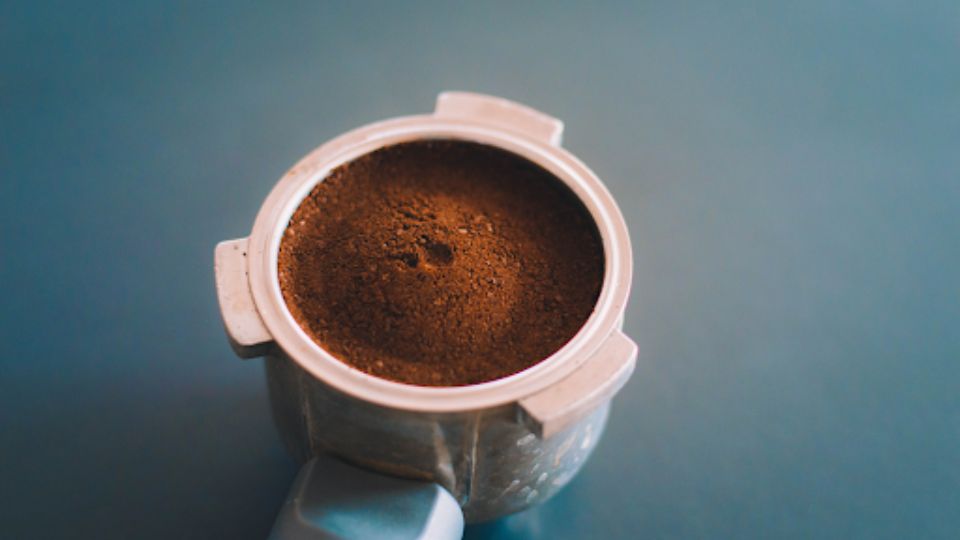
Coffee by nature has a highly moisture-absorbent nature. When exposed to air, the humidity gets the most out of the coffee. Moreover, the grounds can stick due to coffee oils and static charge produced during the grinding process. Additionally, coffee is made up of caffeine molecules that are reactive to water and air that in turn affect acidity and ultimately the final brew.
- How Moisture Affects Stickiness?
It is common knowledge that coffee grounds in your coffee machine can get sticky with just a drop of water. Yet occasionally you’ll find that coffee is sticking to the portafilter in the absence of any water. The wetness is the cause in this case.
Coffee that has been ground is very receptive to moisture. It draws attention due to the weather’s dampness. Because of this, the coffee will become sticky even if there is no nearby water.
- How Static Electricity Makes Coffee Sticky?
It’s static electricity that’s the issue. The electrical charge that beans acquire throughout the grinding process causes the ground coffee to “jump” out of the grinder or stick tenaciously to the sides of the portafilter that collects the ground coffee (often called the grind chamber).
- How Coffee Oils Cause Stickiness?
Coffee might also become stuck together if there are oils present. The process of grinding coffee beans causes the beans to crack and releases the covering that was keeping the oils within. Stickiness is a result of the oil’s adhesive properties.
As you heat up the grinder, especially when it exceeds 40°C, this issue may get worse. The coffee oil becomes more fluid as a result, making it easier for the oil to pass through the coffee. They are therefore more likely to stick in your espresso machine’s portafilter as a result.
You might believe that grinding at temperatures below 40°C will help to reduce stickiness, but it is not a workable approach. Compared to a well-polished tamping surface, a coated surface can decrease issues. A surface that is rough or dented may absorb coffee more rapidly, but it is also more difficult to clean.
Why Does Coffee Stick To The Portafilter?
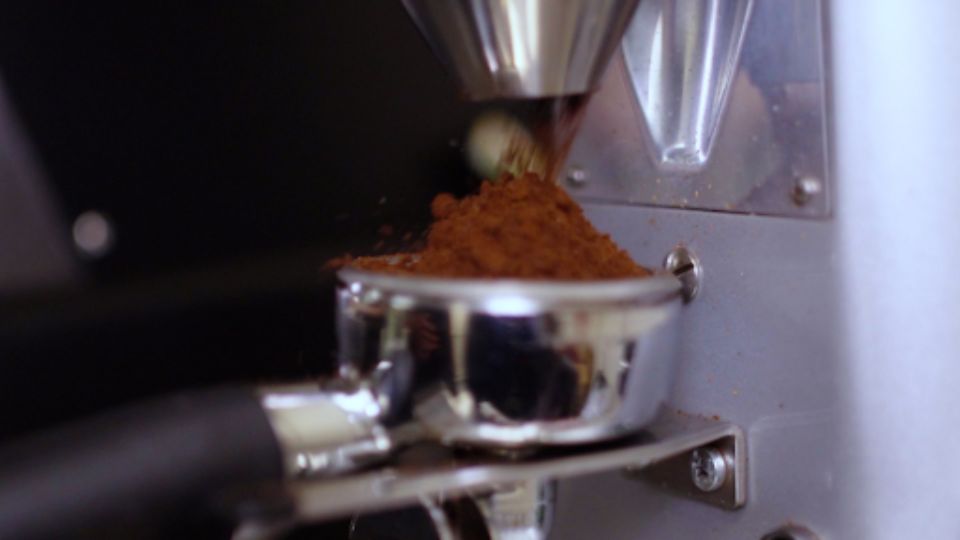
Have you wondered why your puck is stuck to the portafilter? Along with moisture in the air, there’s quite a bit of action behind the screens. If your coffee puck is stuck to the portafilter, it’s usually because of a tamping issue that needs fixing. The issue could range from filling the portafilter with a lot of coffee or a lack of cleaning and moisture in the air.
Should I Wash My Portafilter?
It’s a good idea to keep debris away from your portafilter. As a result, you should wash it thoroughly and frequently enough. The habit will last longer and continue to make your coffee delicious.
If you feel the need to clean it, you can just wash it with hot water. Therefore, it is not necessary to immediately wash the portafilter in your espresso machine after each shot.
How To Clean My Portafilter Basket?
Coffee grounds frequently clog the portafilter basket’s holes. That is a bothersome issue, especially for people who use espresso portafilters. The fine holes in espresso portafilter make it more prone to clogging.
The portafilter basket should then be placed in a bowl of hot water and left for 15 minutes. The dirt and coffee oil will gradually become softer in the hot water. After you see that the dirt has been loose, use a stiff brush or an old toothbrush to clean the holes. The portafilter should then be washed with fresh water.
Occasionally blockage happens as a result of the development of mineral scale in the portafilter. You must soak the portafilter basket in citric acid rather than water to get rid of the mineral layer. The wiping procedure is nonetheless the same.
Can I Clean My Portafilter With Vinegar?
Yes. You can clean your portafilter with vinegar. If your espresso maker has a three-way valve, perform a “backflush” and avoid attempting a weekly backflush if it lacks a three-way valve.
- Simply place a “blind” filter (one with no pores) in the portafilter and add half a teaspoon of white vinegar or cleaner to it.
- Once the pump in your espresso machine is running, leave it alone until it becomes quiet.
- Turn off the pump, then watch as the cleaner is pushed into the drip tray after being propelled through the espresso machine.
- To remove the cleanser, carry out this procedure multiple times with plain water.
- Simply immerse your portafilter, basket, and steam wand in a solution of white vinegar and water for standard espresso machines lacking a three-way valve.
Can I Put My Portafilter In A Dishwashing Liquid?
There is nothing wrong with using dishwasher liquid to clean the stainless steel head. But, conventional dishwashing detergents can discolour the handle of the portafilter.
In general, cleaning a portafilter is advised using hot water and soft scrub pads or cloths. Experts advise against ever submerging a portafilter in dish soap. If you must use it, you must exercise extreme caution.
Most portafilters have a stainless steel head and polytetrafluoroethylene is typically used in the construction of the handles.
Why Do Coffee Grounds Stick To Tampers?
Many baristas encounter the problem of coffee sticking on their tamper on a regular basis. The coffee beans’ oils and lipid content are to blame for this. The coffee may adhere to the surface as a result of the interaction between these oils and the heat from the tamper in an espresso machine.
Moreover, the oils may make the tamper slick, which would make it more difficult to level the coffee. In order to prevent this issue, it’s crucial to clean your tamper after each use. You might also want to consider using a stainless steel tamper, since these tend to be less likely to stick.
How Hard Should I Tamp My Coffee?
On the appropriate amount of pressure to use during tamping, there are several viewpoints and pieces of advice. However, the following is a general guideline that you should abide by:
- Simply keep pressing until the tamper stops moving
- After the grounds have been fully compacted, adding more pressure has no effect on the needle.
To further clarify, consider tamping the coffee in the portafilter until it pushes back. Some folks would suggest a particular pressure level as the best one for tamping. Many times, a range of 20 to 30 pounds is mentioned. You can practise on a scale by tamping on it. However, if you simply heed the preceding guidance, it shouldn’t be required.
How To Fix These Tamping Issues?
Tamping may appear straightforward at first, but it actually requires practice. As they tamp for the first time, many novice baristas make a few blunders.
One of the initial errors is pressing too firmly or too softly. The amount of pressure used when tamping the coffee in your portafilter is crucial, and using either too much or too little will affect the taste of your drink.
Uneven tamping in your portafilter is yet another common mistake. When this occurs, the grounds in your portafilter will no longer be a flat surface but will instead slant in the basket. This is what causes some of the stickiness that could potentially interfere with the quality of the coffee.
After a few shots, the coffee will start to stick to the bottom of the tamp due to static build-up from the pressure applied to the grounds in the portafilter, so make sure you have a brush or cloth handy to wash the bottom of the tamp in your coffee machine after each few shots.
What Happens If You Tamp Coffee To Hard?
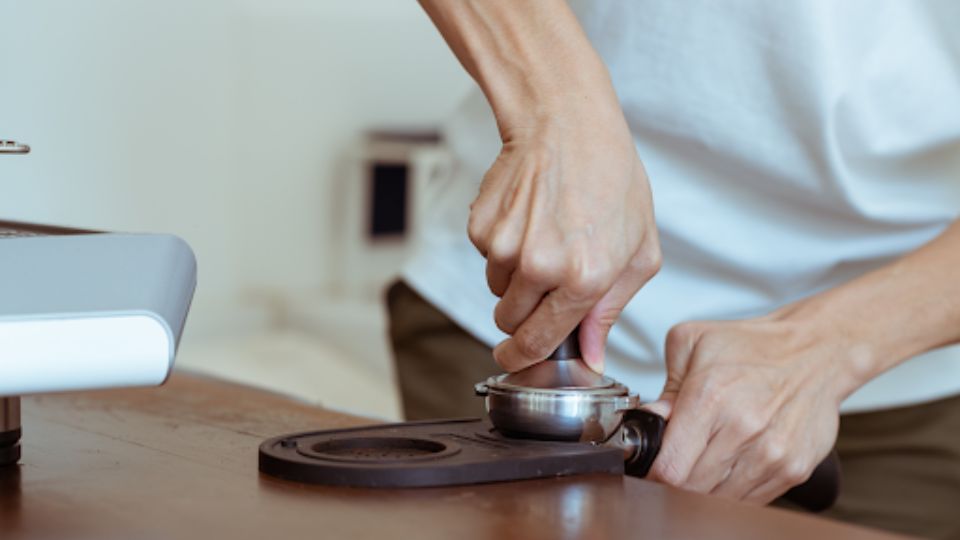
Espresso is packed into the portafilter when it is tamped. The simpler it is for the water to contact each and every coffee particle in the espresso, the more uniformly the espresso is packed. This results in a stronger, more well-rounded flavour.
The particles are not tightly packed when you tamp too lightly. Water sprays across the landscape, imparting a faint, bad-tasting flavour.
On the other hand, tamping too firmly causes the opposite to occur. Water finds it difficult to pass through the puck in the portafilter, and because it takes longer to do so, your espresso is over extracted.
What alters the flavour through excessive extraction? Even for experienced espresso drinkers, it makes an otherwise decent shot very bitter.
We would recommend getting a Barista expert’s opinion on tamping, while using the right portafilter, so you get practical experience with the pressure and holistic knowledge on how it should be done.
How Hard To Tamp Espresso?
You can start to shape the ground coffee into a puck by applying 15 pounds of pressure when it sits in the portafilter. Standing on a bathroom scale, pressing down on the counter, and observing your weight drop will teach you how much pressure to use. Or it will notify you whether you have a calibrated tamper.
Once the puck has been created, press down more firmly to create a compact and durable puck to let it sit in your portafilter. While many baristas use 30 pounds of pressure, some only use 20 pounds.
What Is A Distribution Tool?
A little device called an espresso distribution tool is used to spread coffee grinds uniformly inside an espresso machine’s portafilter. The espresso’s overall quality and flavour can be enhanced by making sure the coffee grinds are dispersed evenly and levelled in the portafilter before crushing.
The instrument normally has a flat base with tiny ridges that evenly distribute the coffee. Few distribution equipments also offer in-depth settings that can be changed to alter how much coffee is dispensed and balanced in the portafilter.
Two Types Of Distribution Tools Are The Most Widely Used Today:
The whisk and the leveller.
The leveller resembles a palm tamper in appearance but has a blade or blades on the bottom rather than a smooth surface. As implied by the name, the coffee is disseminated by the spinning blade or blades of these instruments when they are mounted on the portafilter and turned, much like air is distributed by a fan.
As implied by the name, the coffee is disseminated by the spinning blade or blades of these instruments when they are mounted on the portafilter and turned, much like air is distributed by a fan.
As a result, the heart of the portafilter basket’s mountain of grounds transforms into a flat, uniformly dispersed, but the uncompressed puck-like structure and the only thing left to do is tamp.
The whisks, on the other hand, are designed to break up clumps and ensure that the coffee is equally dispersed to all four corners of the portafilter rather than placed on the basket itself.
Why Do Coffee Grounds Stick To Distribution Tools?
The grounds can be compacted with the use of an effective espresso distributor tool, resulting in a shot with a full, rich flavour.
Espresso distribution equipment comes in a range of forms, from straightforward tamper-like devices to a more intricate coffee machine that can apply varying pressure to the grounds.
The instrument that works best for you and your particular brewing setup is ultimately the best one to use for distributing espresso through the coffee machine.
Conclusion
It takes some amount of trial and error to test out what works to make your best cup of coffee and what doesn’t work. It’s a combination of where the beans come from, type of roast, tamping and technique that defines what makes good coffee.
You can test out what suits your style or become a trained barista at our Nationally Accredited Barista School in Australia and get your certification on the spot.
